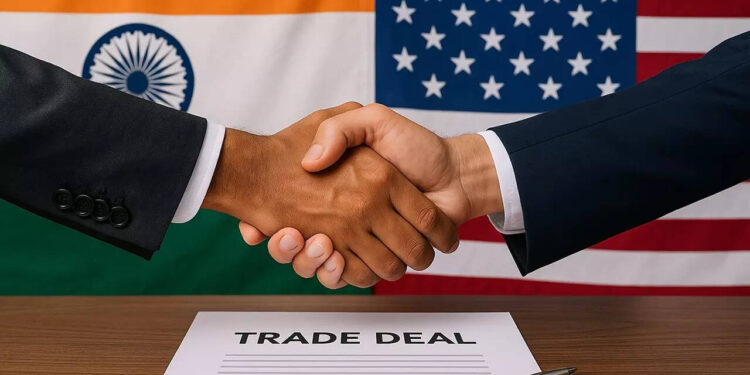Lagatar24 Desk
New Delhi: With American President Donald Trump’s July 9 tariff deadline fast approaching, India and the United States are in a race against time to seal an interim trade deal. Despite Indian negotiators extending their stay in Washington for intense discussions, significant deadlocks remain over key demands from both sides, primarily centered on agricultural market access and tariff reductions.
Agriculture: The Primary Sticking Point
The biggest hurdle to an agreement is the US demand for greater access to India’s heavily protected agricultural sector. The US is pushing for reduced tariffs on products like maize, soybean, various dairy products, apples, and nuts. This presents a major challenge for the Indian government, which is firm on protecting its vast population of small-scale farmers from foreign competition. A core issue is the prevalence of genetically modified (GM) crops in the US, particularly corn and soybeans, which are prohibited for import into India. Furthermore, the Indian dairy sector is considered highly sensitive due to cultural and dietary customs, with concerns over US cattle feeding practices. While India has shown some flexibility on items like dry fruits and apples, it remains resistant to opening up its core farm and dairy sectors.
The Zero Tariff Demand and Other Hurdles
On the other side, India is pushing for greater market access for its key export sectors, including textiles, leather goods, and pharmaceuticals, ideally with zero tariffs. However, the US has dismissed the possibility of immediate zero tariffs, proposing a baseline 10% duty instead, which Indian officials have deemed insufficient. The US is also seeking concessions on imports of products like cars and whiskey, which India feels are not being met with adequate reciprocal benefits for its own industries. Another point of contention is potential ethanol imports from the US, which could undermine India’s domestic Ethanol Blended Petrol (EBP) program. Despite the significant disagreements, officials on both sides remain hopeful that an interim deal can be reached to avert the 26% reciprocal tariffs scheduled to kick in after July 9.








